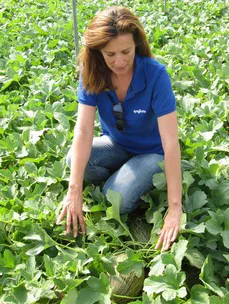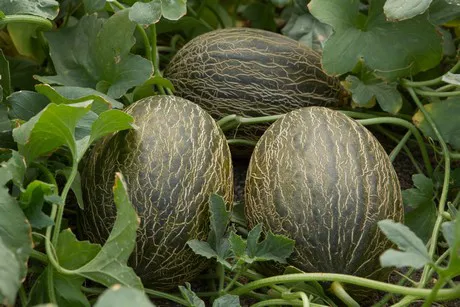
Syngenta's melon research and development takes place in Spain. This is where the research team and breeders of Piel de Sapo and Yellow melons are based.
Its breeding department has two people working in the station of El Ejido, which FreshPlaza recently had the opportunity to visit. The test network is distributed between the research stations of El Ejido, Torre Pacheco (Murcia) and Ciudad Real, as well as in Brazil. This network allows for the design of strategies and selection lines for future commercial varieties.
We talked to Isabel Diaz, Asset Manager of Cucurbits at Syngenta, about Piel de Sapo melons, traditionally the most consumed in Spain, and their future outside Spain.
Piel de Sapo melon varieties to meet demand all year round
"In Europe, Piel de Sapo melon consumption is not common, and until now it had been limited to traditional Spanish markets where flavour is the determining factor. However, this melon variety has been slowly finding its way into the export markets, with calibres of 1.5 to 2 kilos," explains Isabel.
While the export markets require smaller calibres than those traditionally consumed in Spain, Isabel states that this "it is not the only element taken into account when developing new varieties; there is also a search for materials that are better adapted to all production areas and which can meet the expectations of the export markets," she affirms.
In the words of Isabel Diaz: "Until we manage to obtain Piel de Sapo varieties that can reach the necessary quality, taste and flavour parameters to meet the needs of different markets during the 12 months of the year we cannot expect to change consumption trends in other countries. There is still much work to be done in this sense."

Elzar, the new option for late transplant, greenhouse cultivation
"After more than four years working on the development of this variety, our latest innovation in the field of Piel de Sapo melon growing for late transplant, greenhouse cultivation is the Elzar variety," she says. "It stands out for its uniform setting, average netting, crisp flesh, strong taste and good post-harvest shelf life."
"We aim to ensure that consumer demands and expectations in terms of flavour and aroma are met with our melon varieties. This ensures an experience that will motivate consumers to repeat and therefore eat more melons," she concludes.
For more information:
 David Bodas
David Bodas
Food Chain Manager Iberia - Customer Strategy
Syngenta España, S.A.
C/ Ribera del Loira 8-10, 3.ª planta
28042 Madrid (Spain)
T: (+34) 91 387 64 70
M: (+34) 619 384 037
david.bodas@syngenta.com
www.syngenta.es


 David Bodas
David Bodas


 David Bodas
David Bodas